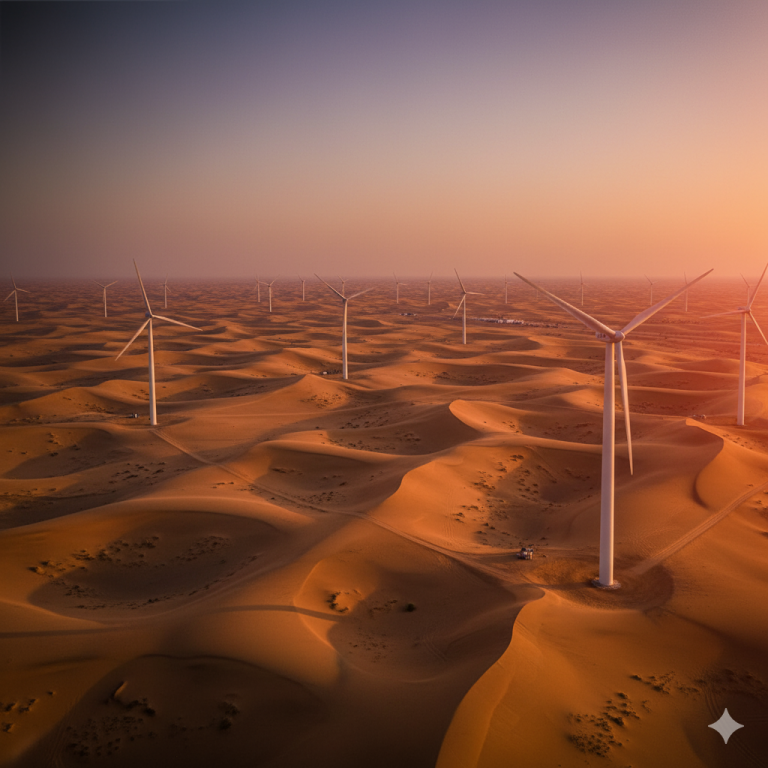The Hydrogen Horizon: A New Frontier for China-UAE Energy Ties
In an era defined by an urgent global imperative to decarbonize and transition towards sustainable energy sources, the burgeoning partnership between China and the United Arab Emirates (UAE) is charting a remarkable course. While historically rooted in the trade of conventional hydrocarbons, this strategic alliance is rapidly evolving, with hydrogen emerging as a pivotal new frontier. This article delves into the industrial perspective, historical trajectory, and future potential of China-UAE energy cooperation, arguing that hydrogen is poised to become a cornerstone of their shared economic and environmental ambitions, driving innovation and fostering sustainable growth.
The global energy landscape is undergoing a profound transformation. Nations worldwide are committing to ambitious net-zero targets, spurred by the escalating climate crisis and the economic opportunities presented by green technologies. Hydrogen, with its versatility as an energy carrier and its potential for near-zero emissions when produced sustainably, stands at the forefront of this transition. Both China and the UAE, two economic powerhouses with distinct yet complementary strengths, recognize hydrogen’s strategic importance. Their collaboration in this nascent sector is not merely a continuation of their long-standing energy ties but a significant leap towards a future where energy security and environmental stewardship converge.
The relationship between China and the UAE has flourished over decades, evolving from a primarily transactional exchange of oil for manufactured goods into a comprehensive strategic partnership encompassing trade, investment, technology, and culture. This deep-seated trust and mutual benefit provide a robust foundation for venturing into complex and capital-intensive new energy domains. As the world pivots away from fossil fuels, both nations are proactively recalibrating their energy strategies. The UAE, a traditional oil and gas giant, is aggressively diversifying its economy and energy mix through initiatives like Vision 2030, aiming to become a global leader in renewable energy and green hydrogen production. Concurrently, China, the world’s largest energy consumer and a manufacturing titan, is vigorously pursuing its dual carbon goals—peaking carbon emissions before 2030 and achieving carbon neutrality before 2060—with hydrogen playing a critical role in its industrial decarbonization and energy security agenda.
This confluence of national ambitions and strategic imperatives sets the stage for an unprecedented era of cooperation. The ‘Hydrogen Horizon’ represents more than just a technological shift; it symbolizes a shared vision for economic resilience, environmental responsibility, and global leadership in the clean energy transition. By leveraging their respective strengths—the UAE’s abundant renewable energy resources and strategic location, and China’s vast industrial capacity, technological prowess, and immense market demand—the two nations are poised to unlock the full potential of hydrogen, transforming it from a niche energy vector into a mainstream pillar of their bilateral energy ties and, by extension, the global energy future. This article will explore how this partnership is not only reshaping their bilateral relations but also offering a compelling model for international collaboration in the pursuit of a sustainable future.
II. Historical Foundations: From Oil to Renewables
The narrative of China-UAE energy cooperation is deeply intertwined with the global hydrocarbon economy. For decades, the relationship was primarily characterized by the UAE’s role as a crucial supplier of oil and gas to China’s rapidly expanding economy. This early energy diplomacy laid a strong foundation, fostering mutual economic dependence and strategic alignment. China’s insatiable demand for energy to fuel its industrial growth found a reliable partner in the UAE, a nation blessed with vast hydrocarbon reserves and a stable political environment. This period saw significant investments and trade agreements, solidifying the UAE’s position as a key energy provider in Asia and China’s as a major consumer and investor in the Middle East’s energy sector [1].
However, as the 21st century progressed, both nations recognized the imperative for economic diversification and a shift towards more sustainable energy paradigms. The UAE, under its visionary leadership, embarked on an ambitious journey to reduce its reliance on oil and gas, encapsulated in initiatives like Vision 2030. This strategic framework aims to transform the UAE into a knowledge-based economy, with a strong emphasis on innovation, technology, and renewable energy. A cornerstone of this diversification is the development of a robust clean energy sector, leveraging the nation’s abundant solar resources and strategic geographical location [2].
Similarly, China, facing mounting environmental pressures and a desire for energy security beyond fossil fuels, initiated its own comprehensive energy transition strategy. The nation’s
dual carbon goals—peaking carbon emissions before 2030 and achieving carbon neutrality before 2060—underscore a profound commitment to decarbonization. This has led to massive investments in renewable energy technologies, making China a global leader in solar, wind, and hydropower [3].
Against this backdrop of evolving national strategies, the China-UAE energy cooperation began to broaden its scope beyond traditional hydrocarbons. Early forays into green energy saw collaborations in solar and wind power projects, laying the groundwork for a more diversified partnership. These initial ventures, though perhaps modest in scale compared to the oil trade, were significant in demonstrating a shared commitment to exploring new energy frontiers and building mutual expertise in renewable technologies. They served as a crucial bridge, transitioning the relationship from one primarily focused on fossil fuels to a more comprehensive energy dialogue that now increasingly embraces the promise of hydrogen [4].
III. The Hydrogen Imperative: A Shared Vision
The emergence of hydrogen as a critical component of the global energy transition has provided a powerful new impetus for China-UAE cooperation. Both nations have articulated ambitious strategies to develop their hydrogen economies, recognizing its potential to decarbonize hard-to-abate sectors and serve as a flexible energy carrier.
The UAE has positioned itself as a prospective global leader in low-carbon hydrogen production. Its National Hydrogen Strategy 2050 aims to significantly strengthen its position as a producer and supplier of low-emission hydrogen. By 2031, the UAE targets a production capacity of 1.4 million tonnes per annum (mtpa) of low-carbon hydrogen, encompassing green, blue, and pink hydrogen. This ambitious goal is supported by the nation’s abundant solar resources, which are ideal for producing green hydrogen through electrolysis, and its existing natural gas infrastructure, which can facilitate blue hydrogen production with carbon capture and storage (CCS) technologies [5]. The UAE’s strategic location, with access to key shipping routes, further enhances its potential as a major hydrogen exporter.
China, on the other hand, views hydrogen as indispensable for achieving its dual carbon goals and enhancing energy security. The nation’s hydrogen roadmap emphasizes both production and extensive industrial application. China aims to produce 100,000 to 200,000 tons of low-carbon hydrogen annually by 2025 and establish a relatively complete hydrogen industry development system. Its strategy focuses on integrating hydrogen into electrical and thermal energy systems, substituting coal and natural gas in industrial processes, and developing hydrogen fuel cell vehicles. China’s vast industrial base and technological advancements, particularly in electrolyzer manufacturing, position it as a key player in driving down the costs of hydrogen production and deployment globally [6].
The synergies between China’s demand and technological prowess and the UAE’s production potential and strategic location are evident. The UAE can leverage its competitive advantages in renewable energy and carbon capture to become a reliable supplier of low-cost, low-carbon hydrogen. China, with its massive industrial demand and advanced manufacturing capabilities, can provide the market and the technology to scale up hydrogen production and utilization. This complementarity creates a powerful foundation for a mutually beneficial partnership, where the UAE can diversify its energy exports and China can secure a clean energy source for its decarbonization efforts.
IV. Industrial Perspective: Driving Economic Transformation
The strategic alignment between China and the UAE on hydrogen is translating into tangible industrial collaborations, driving significant economic transformation in both nations. These partnerships are characterized by substantial investments, joint ventures, and a robust exchange of technology and expertise, all aimed at building a comprehensive hydrogen value chain.
Investment and Infrastructure Development: Both countries are actively channeling significant capital into hydrogen projects. The UAE has several hydrogen projects under development, valued at approximately $1.7 billion, with ambitions to supply a substantial portion of the global low-carbon hydrogen market [7]. Chinese companies are increasingly looking to invest in these projects, bringing not only financial capital but also extensive experience in large-scale infrastructure development. Joint ventures are forming to build hydrogen production facilities, transportation networks, and storage solutions, creating new industrial ecosystems. For instance, the UAE’s Masdar, a global leader in renewable energy, is collaborating with Chinese energy firms on solar and green hydrogen projects, supporting the UAE’s Net Zero by 2050 strategic initiative [8]. Another notable partnership involves the Al Fanar Gas Group and Siemens Energy, focusing on advancing hydrogen and power-to-X solutions for the UAE’s net-zero goals, indicating a broader engagement with international technology providers [9].
Technological Exchange and Innovation: A critical aspect of this industrial cooperation is the exchange of technology and expertise. China has made significant strides in hydrogen technologies, particularly in the manufacturing of alkaline electrolyzers and fuel cells, often at a lower cost than Western counterparts [10]. The UAE, while investing heavily in its own R&D, benefits from China’s experience in scaling up these technologies. Conversely, the UAE’s expertise in large-scale renewable energy projects and carbon capture technologies offers valuable insights for China’s decarbonization efforts. This reciprocal learning and technology transfer are fostering innovation, accelerating the development of more efficient and cost-effective hydrogen solutions, from production to end-use applications.
Economic Impact: The industrial collaboration in hydrogen is poised to generate substantial economic benefits. It is creating new job opportunities in manufacturing, engineering, research, and logistics. For the UAE, it represents a crucial step in its economic diversification strategy, reducing reliance on traditional oil revenues and establishing new export industries. For China, it ensures a stable supply of clean energy, supports the decarbonization of its heavy industries, and opens new avenues for its technology and manufacturing sectors in the global hydrogen market. The development of hydrogen infrastructure also promises to create new trade routes and strengthen economic linkages between the two nations, reinforcing their strategic partnership in the evolving global energy landscape.
V. Navigating the Future: Challenges and Opportunities
The path to a fully realized hydrogen economy, while promising, is not without its challenges. Both China and the UAE, in their collaborative efforts, must navigate a complex landscape of technological hurdles, economic considerations, and regulatory frameworks. However, these challenges are matched by significant opportunities for global leadership, enhanced energy security, and profound environmental impact.
Challenges: One of the primary challenges remains the cost-competitiveness of green hydrogen compared to fossil fuels and even grey hydrogen. While costs are declining rapidly due to technological advancements and economies of scale, significant investment is still required to make green hydrogen economically viable across all applications. Technological hurdles persist in areas such as efficient large-scale electrolysis, hydrogen storage, and safe transportation over long distances. The development of robust and standardized regulatory frameworks is also crucial to facilitate investment, ensure safety, and create a level playing field for hydrogen projects. Furthermore, the logistics and transportation of hydrogen, particularly for international trade, present complex engineering and infrastructure challenges, requiring new pipelines, liquefaction facilities, and specialized shipping vessels [11].
Opportunities: Despite these challenges, the opportunities presented by a thriving China-UAE hydrogen partnership are immense. By jointly investing in research and development, and by sharing best practices, both nations can accelerate the pace of innovation, driving down costs and overcoming technological barriers. This collaboration positions them to become global leaders in the hydrogen economy, setting standards and influencing the direction of this nascent industry. For the UAE, hydrogen offers a pathway to long-term energy security and continued relevance in a decarbonized world, transforming its role from a traditional energy exporter to a clean energy powerhouse. For China, it provides a critical tool for climate change mitigation, enabling the decarbonization of its industrial sector and reducing air pollution. Together, they can foster a new energy ecosystem that is more resilient, sustainable, and less susceptible to geopolitical fluctuations in fossil fuel markets. Their cooperation can also serve as a powerful model for South-South cooperation in addressing global climate challenges and achieving sustainable development goals [12].
Policy Support and International Cooperation: The success of this hydrogen frontier will heavily depend on sustained policy support from both governments. This includes incentives for hydrogen production and consumption, favorable regulatory environments, and funding for R&D. International cooperation, beyond the bilateral scope, will also be vital. Engaging with international bodies, participating in global hydrogen initiatives, and collaborating with other nations will help standardize technologies, harmonize regulations, and build a global hydrogen market. The China-UAE partnership can play a leading role in advocating for and shaping these international efforts.
VI. Conclusion: Charting a Sustainable Course
The journey of China-UAE energy cooperation, traditionally anchored in the reliable currents of oil and gas, is now navigating towards a transformative hydrogen horizon. This article has underscored how hydrogen is not merely an alternative fuel but a strategic imperative that is redefining the bilateral energy relationship, propelling both nations towards a future of industrial innovation and sustainable growth.
From the historical foundations of oil diplomacy to the present-day shared vision for a decarbonized future, the evolution of this partnership reflects a pragmatic adaptation to global energy shifts. The UAE’s ambitious production targets and strategic investments, coupled with China’s vast industrial capacity, technological leadership, and immense demand, create a powerful synergy. This industrial collaboration is already manifesting in significant joint ventures, technological exchanges, and the development of new infrastructure, promising substantial economic benefits and job creation.
While challenges such as cost-competitiveness, technological hurdles, and logistical complexities remain, the opportunities for China and the UAE to emerge as global leaders in the hydrogen economy are profound. Their concerted efforts can accelerate the transition to a clean energy future, enhance energy security, and provide a compelling model for international cooperation in addressing climate change. The proactive policy support and commitment to international collaboration from both governments will be crucial in overcoming obstacles and realizing the full potential of this partnership.
In charting this sustainable course, China and the UAE are not only securing their own energy futures but also contributing significantly to the global energy transition. The ‘Hydrogen Horizon’ is a testament to their foresight, resilience, and shared commitment to building a more sustainable and prosperous world. Their collaboration serves as a beacon, illustrating how strategic partnerships can transform global challenges into opportunities for innovation, growth, and a cleaner planet.
References
[1] The-Report. (2025, June 30). The UAE and China: shaping global progress. Retrieved from https://www.the-report.com/reports/united-arab-emirates/uae-teo/the-uae-and-china-shaping-global-progress/
[2] U.ae. (n.d.). National Hydrogen Strategy. Retrieved from https://u.ae/en/about-the-uae/strategies-initiatives-and-awards/strategies-plans-and-visions/environment-and-energy/national-hydrogen-strategy
[3] CSIS. (2023, December 11). China’s Essential Role in the Gulf States’ Energy Transitions. Retrieved from https://www.csis.org/analysis/chinas-essential-role-gulf-states-energy-transitions
[4] HROne. (2025, August 19). What is the UAE-China Green Energy Collaboration? Discover the Transformative Impact! Retrieved from https://hrone.com/blog/what-is-the-uae-china-green-energy-collaboration-discover-the-transformative-impact/
[5] Norton Rose Fulbright. (2025, July 21). Understanding hydrogen and CCS in the UAE. Retrieved from https://www.nortonrosefulbright.com/en-us/knowledge/publications/d3663d42/understanding-hydrogen-and-ccs-in-the-uae
[6] Eversheds Sutherland. (2025, January 20). China: New Policies Boost Low-Carbon Hydrogen in Industrial Sector. Retrieved from https://www.eversheds-sutherland.com/en/saudi-arabia/insights/china-new-policies-boost-low-carbon-hydrogen-in-industrial-sector
[7] FuelCellsWorks. (n.d.). UAE Has 6 Hydrogen Projects Worth $1.7bln Under Development. Retrieved from https://fuelcellsworks.com/news/uae-has-6-hydrogen-projects-worth-1-7bln-under-development
[8] ProXperts. (2025, May 15). UAE and China Forge $5 Billion Partnership to Boost AI, Renewable Energy, and Infrastructure. Retrieved from https://proxperts.ae/blog/uae-and-china-forge-5-billion-partnership-to-boost-ai-renewable-energy-and-infrastructure
[9] FuelCellsWorks. (2025, May 28). Al Fanar Gas Group and Siemens Energy Partner on UAE Hydrogen and Power-to-X Solutions. Retrieved from https://fuelcellsworks.com/2025/05/28/energy-innovation/new-partnership-to-advance-hydrogen-and-power-to-x-solutions-for-uae-net-zero-goals
[10] FCHEA. (n.d.). The Rise of China in the Global Hydrogen Economy. Retrieved from https://fchea.org/the-rise-of-china-in-the-global-hydrogen-economy/
[11] ScienceDirect. (2023). Potential utilization of hydrogen in the UAE’s industrial sector. Retrieved from https://www.sciencedirect.com/science/article/abs/pii/S0360544223015025
[12] Baker Institute. (2024, December 16). Shaping the Energy Transition: Gulf-China Collaboration. Retrieved from https://www.bakerinstitute.org/research/shaping-energy-transition-gulf-china-collaboration







